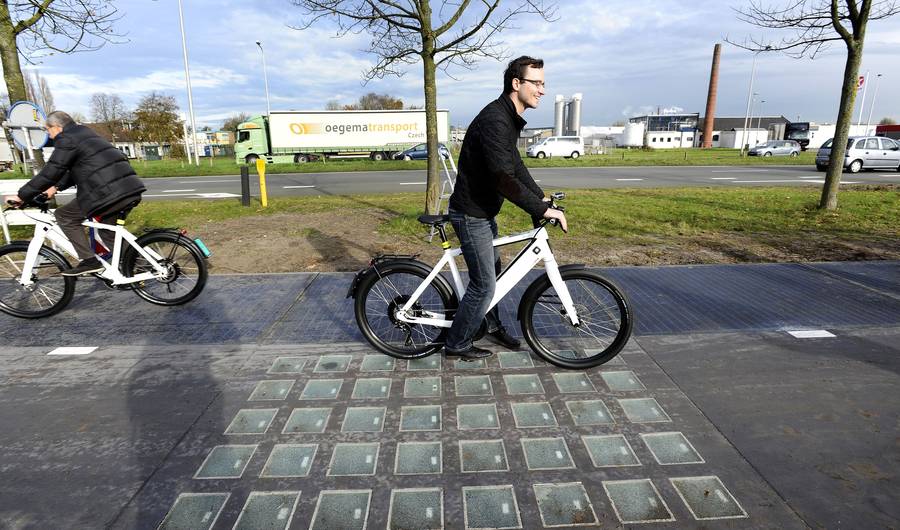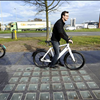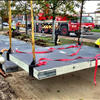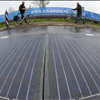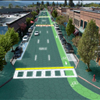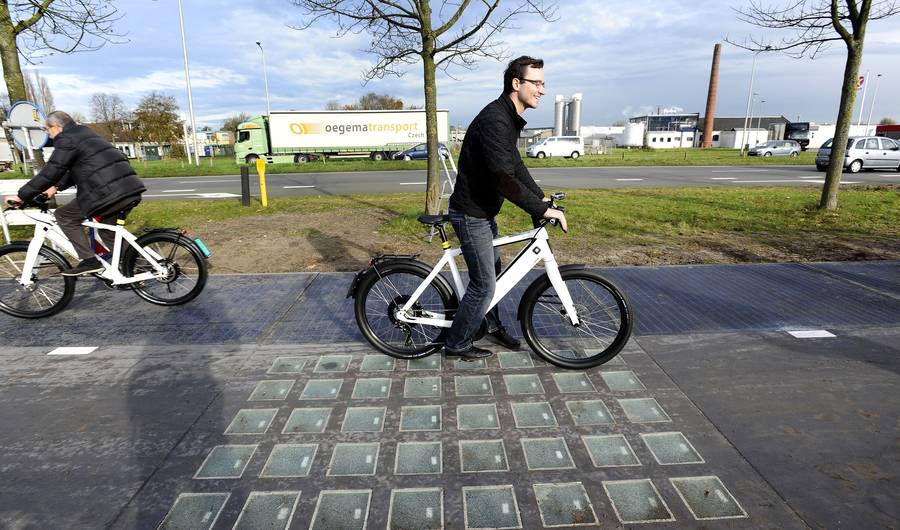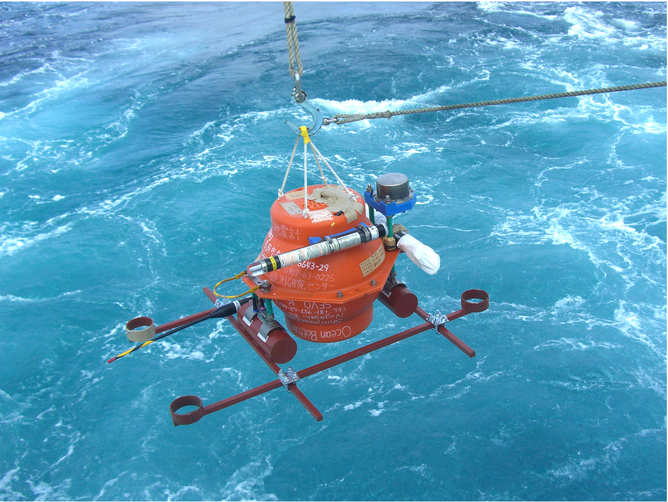Right Now
Netherlands' Solar Bike Paths Passes with Flying Colors
A Dutch project to turn the nation's bike paths into energy-generating solar roadways has just cleared its first major test with flying colors.
Al Jazeera reports SolaRoad's 70-meter test track near the town of Krommenie outside Amsterdam has generated over 3,000 kilowatt-hours over its first six months of operation, or "enough to provide a single-person household with electricity for a year." That translates to 70 kwh per square meter of solar road per year, which the designers predicted as an "upper limit" during the planning process.
Basically, it works really, really well.
The background: According to Al Jazeera, the roads are constructed of cheap, mass-produced solar panels that are protected with multiple layers of glass, silicon rubber and concrete before being covered with a coating that prevents slippage on the smooth upper surface. The current version can support vehicles of up to 12 metric tonnes (the average U.S. car is just under 2 tonnes), but is not yet ready for use with even heavier vehicles like buses and cargo trucks.
The ambitious project was constructed just a few months ago, with the first SolaRoad opening for traffic on Nov. 12, 2014. At the time, Mic's Sophie Kleeman noted the road "can't be angled toward the sun, so it receives roughly 30% less solar power than roof panels. It was also incredibly expensive — roughly $3.7 million, paid for largely by the local government."
Inhabitat also reported up to 20% of the Netherlands' nearly 87,000 miles of road "could potentially be adapted into SolaRoads, which would amount to an additional 400 to 500 km sq (154 to 193 mi sq) of energy-generating PV."
The anti-slip coating began to peel away thanks to long-term sun exposure and temperature fluctuations, but researchers told Al Jazeera they are already at work developing an improved version.
Why you should care: Solar roadways are most likely the wave of the future. Though the technology is pricey and not yet perfected, decades of use of the panels could help the roads pay for themselves.
"Solar panels on roofs are designed to have a lifetime, which is typically 20 to 25 years," says company spokesman Dr. Sten de Wit, according to Gazette Review. "This is the type of lifetime that we also want for these types of slabs. If you have a payback time of 15 years, then afterwards you also have some payback of the road itself so that makes the road cheaper in the end."
In a previous interview with the BBC, de Wit added the roads have the additional advantage of generating electricity locally, as well as potentially helping to power sensors that "improve traffic management, or even allow automatic vehicle guidance."
Others are working on similar projects as well. An American effort raised over $2 million on Indiegogo to move forward their own Solar Roadways project that could one day pave U.S. roads and parking lots.
SolaRoad may seem straight out of a sci-fi movie, but it looks like that as far as solar-powered roads are concerned, the future is already here.
A Dutch project to turn the nation's bike paths into energy-generating solar roadways has just cleared its first major test with flying colors.
Al Jazeera reports SolaRoad's 70-meter test track near the town of Krommenie outside Amsterdam has generated over 3,000 kilowatt-hours over its first six months of operation, or "enough to provide a single-person household with electricity for a year." That translates to 70 kwh per square meter of solar road per year, which the designers predicted as an "upper limit" during the planning process.
Basically, it works really, really well.
The background: According to Al Jazeera, the roads are constructed of cheap, mass-produced solar panels that are protected with multiple layers of glass, silicon rubber and concrete before being covered with a coating that prevents slippage on the smooth upper surface. The current version can support vehicles of up to 12 metric tonnes (the average U.S. car is just under 2 tonnes), but is not yet ready for use with even heavier vehicles like buses and cargo trucks.
The ambitious project was constructed just a few months ago, with the first SolaRoad opening for traffic on Nov. 12, 2014. At the time, Mic's Sophie Kleeman noted the road "can't be angled toward the sun, so it receives roughly 30% less solar power than roof panels. It was also incredibly expensive — roughly $3.7 million, paid for largely by the local government."
Inhabitat also reported up to 20% of the Netherlands' nearly 87,000 miles of road "could potentially be adapted into SolaRoads, which would amount to an additional 400 to 500 km sq (154 to 193 mi sq) of energy-generating PV."
The anti-slip coating began to peel away thanks to long-term sun exposure and temperature fluctuations, but researchers told Al Jazeera they are already at work developing an improved version.
Why you should care: Solar roadways are most likely the wave of the future. Though the technology is pricey and not yet perfected, decades of use of the panels could help the roads pay for themselves.
"Solar panels on roofs are designed to have a lifetime, which is typically 20 to 25 years," says company spokesman Dr. Sten de Wit, according to Gazette Review. "This is the type of lifetime that we also want for these types of slabs. If you have a payback time of 15 years, then afterwards you also have some payback of the road itself so that makes the road cheaper in the end."
In a previous interview with the BBC, de Wit added the roads have the additional advantage of generating electricity locally, as well as potentially helping to power sensors that "improve traffic management, or even allow automatic vehicle guidance."
Others are working on similar projects as well. An American effort raised over $2 million on Indiegogo to move forward their own Solar Roadways project that could one day pave U.S. roads and parking lots.
SolaRoad may seem straight out of a sci-fi movie, but it looks like that as far as solar-powered roads are concerned, the future is already here.
-
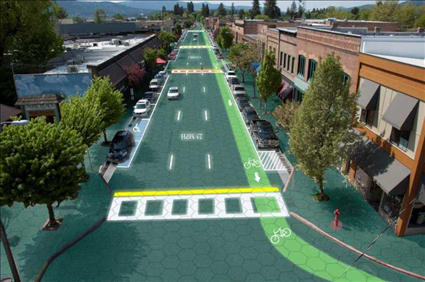 6 Months Later, Here's What's Happened to the Netherlands' Solar Bike Paths
6 Months Later, Here's What's Happened to the Netherlands' Solar Bike Paths
Roads? Where we're going, we have solar roads.
Sign In to leave a comment
More Posts

PwrCor s PWCO Chief Execu...
13 Apr 2020

Why some of us our shy and ...
5 Jun 2019

Scientists reveal secrets o...
5 Jun 2019

Robert Downey Jrh
5 Jun 2019

Report This Post
Please complete the following requested information to flag this post and report abuse, or offensive content. Your report will be reviewed within 24 hours. We will take appropriate action as described in Findit terms of use.
Thank you. Your abuse report was sent.



